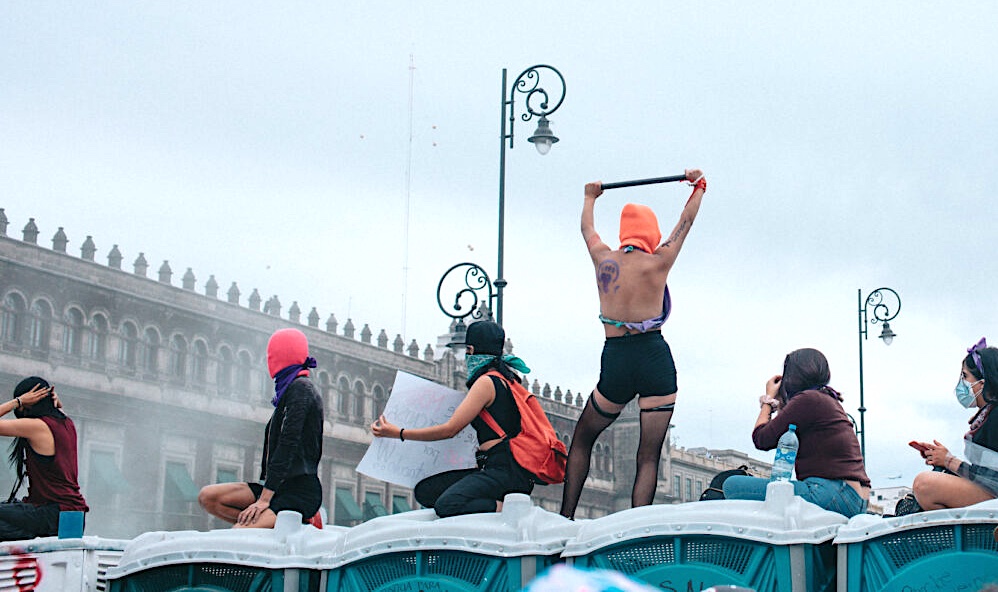In Mexico City, International Women’s Day is when a feminine massive takes to the streets, takes over the streets. Here, you never say “Happy Women’s Day.” To the contrary; on March 8, the rest of the country must feel some small sliver of women’s pain. The National Institute of Statistics and Geography [INEGI] calculates that 10 femicides take place every day, and that 66 percent of Mexican women have experienced sexual violence.
If you believe official numbers (don’t … ), more than 80 people were injured in this year’s Day of the Woman Worker march, the vast majority being police. But in reality, every one of the 20,000 people who were estimated at the protest should be counted as walking wounded.
That number included community groups, university clubs, human rights non-profits, sex workers, moms with strollers, and small packs of teens and twenty- and thirty-somethings with a sharp need to scream the year’s sadness, even spray paint their rapist’s name in bright green aerosol on a historic building or on the threatening, recently constructed metal walls that were meant to separate women marchers from the patriarchy’s structures.
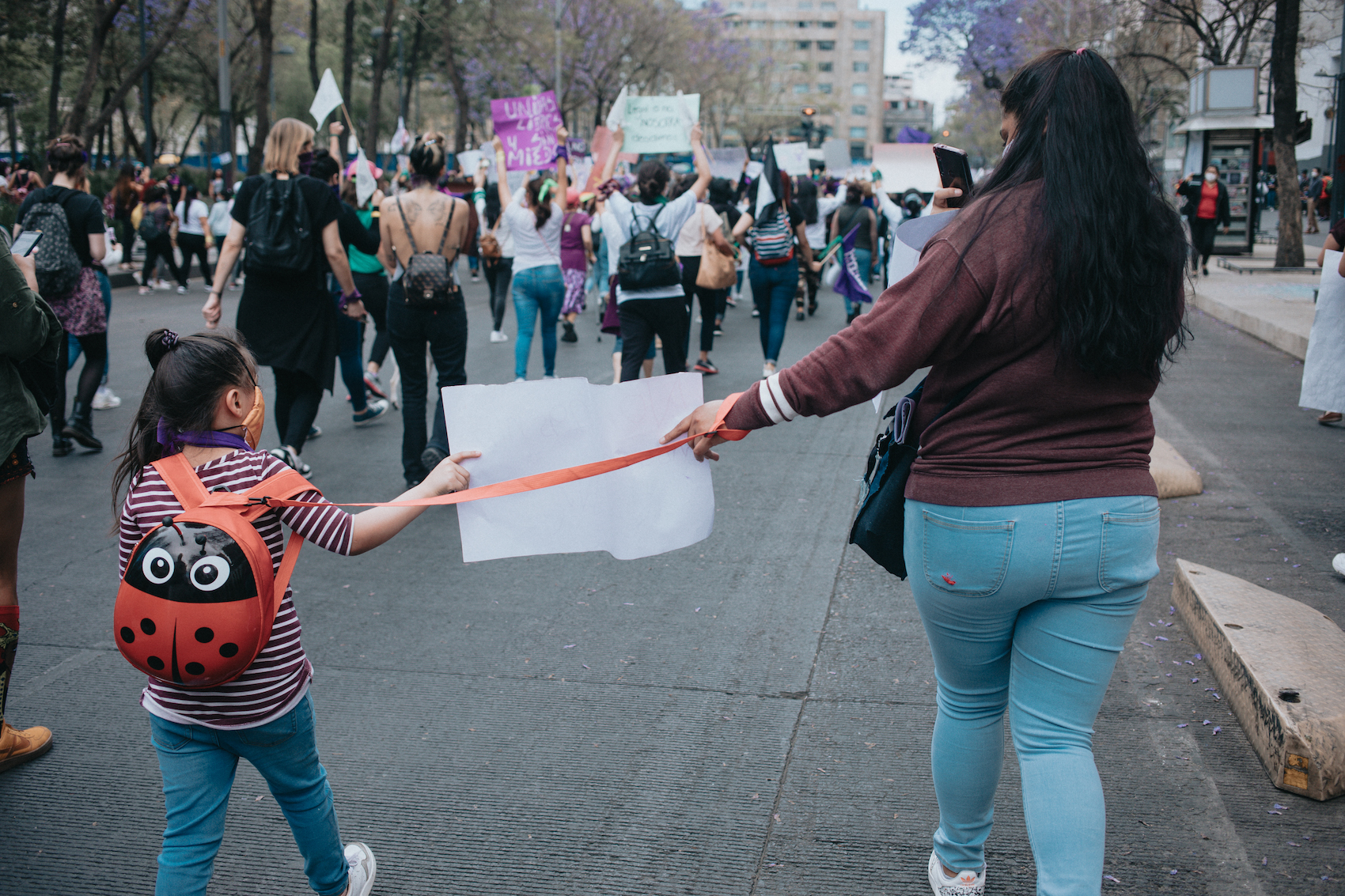
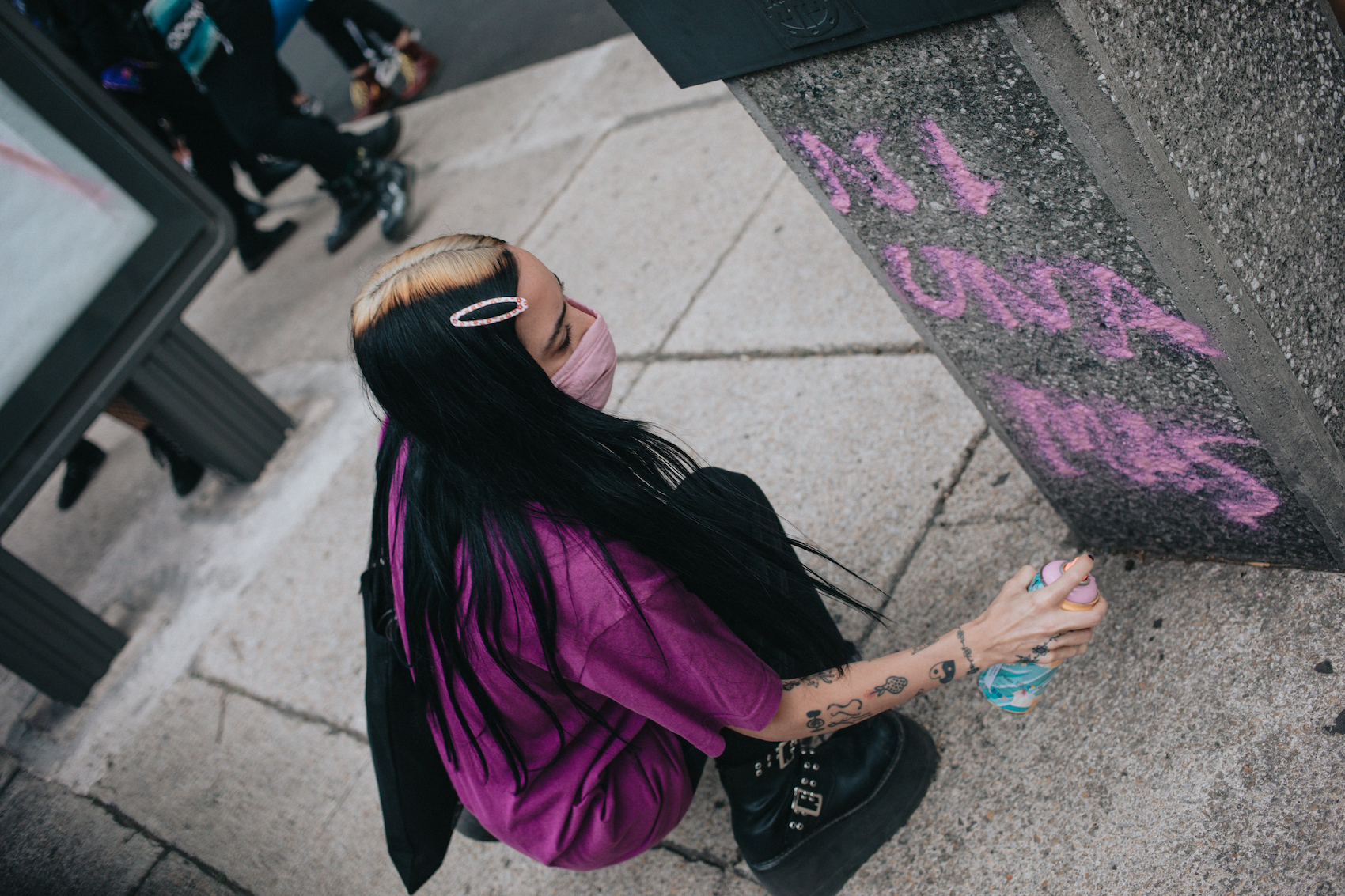
The power of the march is hard to understand if you’ve never been. In certain deeply-felt moments, when your voice grows hoarse in such a diverse mass of womandom, you have the sense that the strength of all cannot possibly be ignored.
There are a few things you should know. In the first place, that the government has all but trained women that if they don’t vandalize, their protest won’t make a sound.

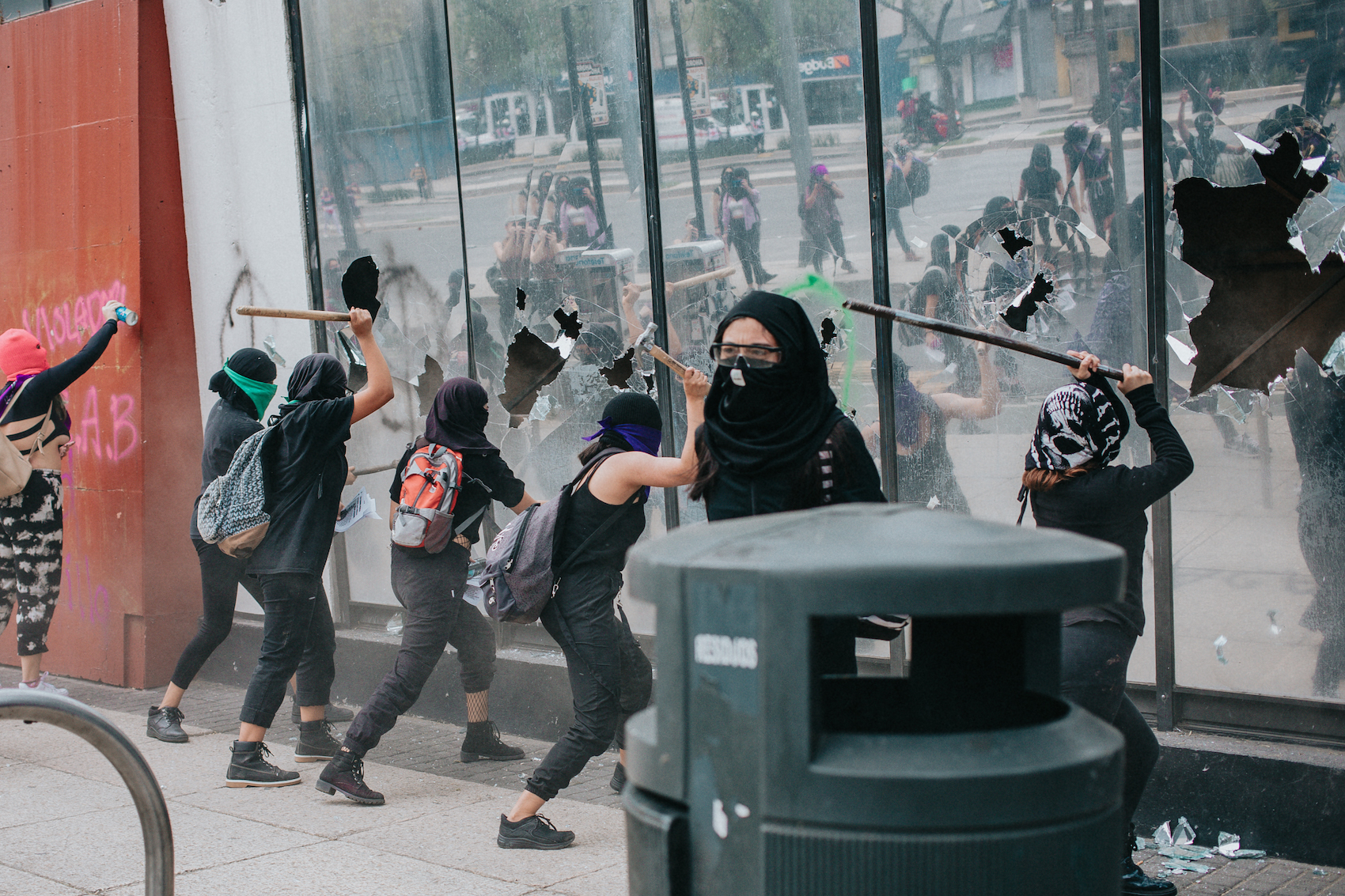
That lesson was learned by many in 2019 when President AMLO, despite his daily press conferences at dawn, failed to acknowledge a rash of rapes of young women by on-duty cops, or the subsequent mass protests that took place over the violations.
Until, that is, the base of one of the city’s most iconic monuments, the Ángel de la Independencia, received an even more iconic coat of rainbow graffiti denouncing gender-based assault. In that moment, AMLO commented—on violence against monuments.
“We are all obligated to act in a responsible manner, no excesses,” he told members of the press.
Help us save local journalism!
Every tax-deductible donation helps us grow to cover the issues that mean the most to our community. Become a 48 Hills Hero and support the only daily progressive news source in the Bay Area.
But on March 8, 2021, the walls AMLO’s administration had built became the site of excessive conflict.
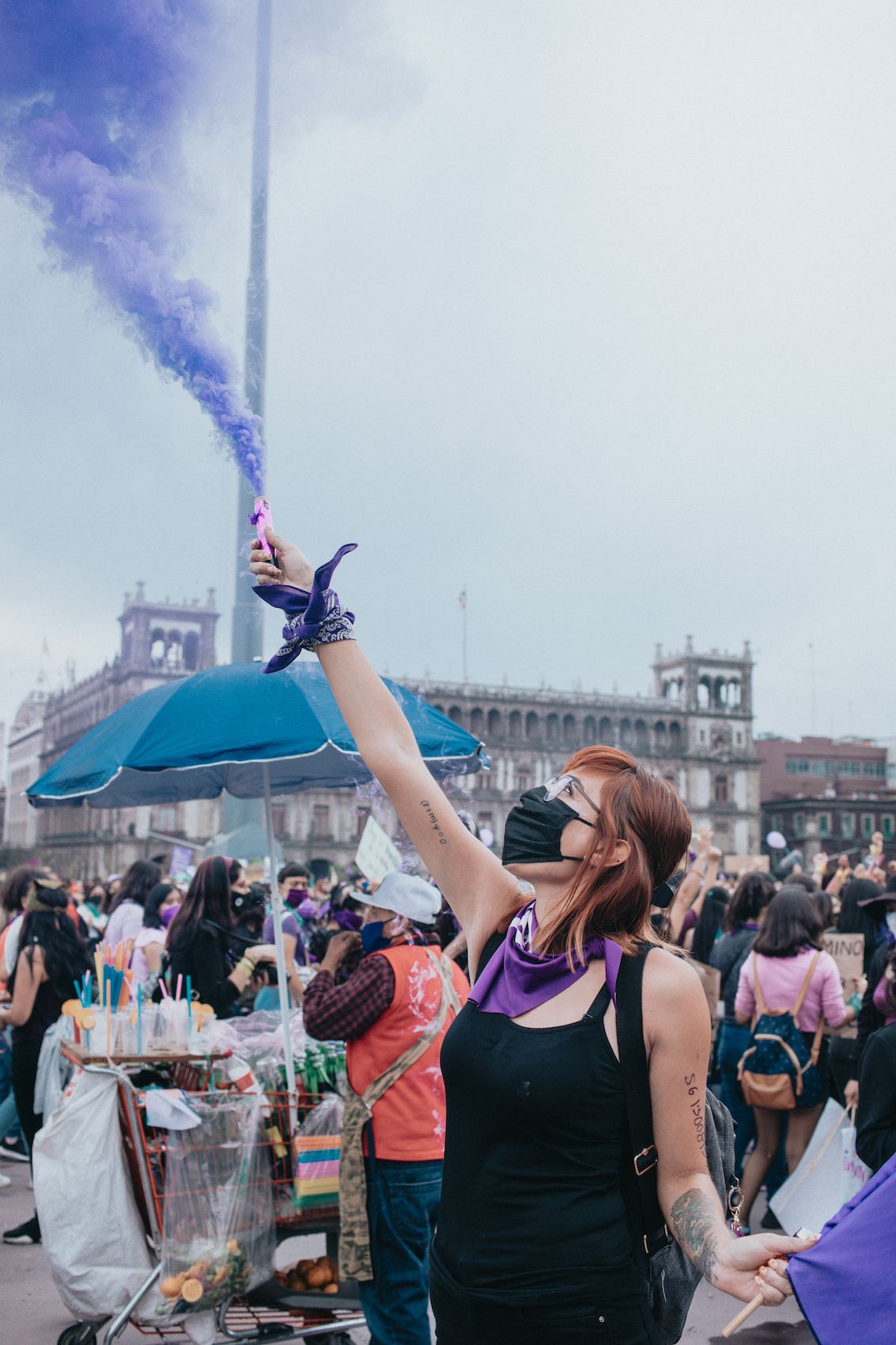
On the Friday before the march, the walls were covered by feminist collectives with the names of women who have been lost to violence. Then, on the Sunday before the march, someone brought a projector, and the president’s palace, there behind the wall, was lit up in the urgent messages that would guide the hands of the women who would march.
“A rapist will not be governor,” it read.
That part. Because on top of AMLO’s assertions—in response to a startling rise in abuse rates during the COVID pandemic—that “90 percent” of calls to domestic abuse hotlines were fake, he’s also supporting Félix Salgado for governor, who, there seems to be no doubt, is a monster.
Salgado, who is running to lead the Drug War-strafed state of Guerrero, has been accused of raping five women. One was a minor at the time. Another was a journalist employed at a publication he owned. Salgado allegedly drugged and raped the latter, then coerced her into meeting with him again with the threat of publishing photos of her naked and unconscious. When she acceded to the request, he raped her again, beating her for good measure.

Women from AMLO’s political party Morena released a video on the Saturday before the march commanding Salgado to resign. Activist Stephanie Veloz renounced her affiliation with Morena entirely, saying it had “betrayed women.”
It was in this environment that women readied for the march. Some printed t-shirts of a missing or slaughtered loved one. Some pasted the names of their heroines on top of street signs, rechristening the avenues of Mexico City. Some tuned their musical instruments, like the woman with the viola who we saw on the corner of Avenida 5 de Mayo, accompanying her sisters’ fury with a stirring concerto.
Marchers spotted armed men on rooftops. If you think 50-some years is long enough for Mexico City to forget the horrors of 1968’s Tlatelolco massacre in which men like these killed swaths of protestors, you are wrong.
This part blows, but the police weren’t the only perpetrators of violence within the crowd. Mexican feminism is experiencing a tragic, horrific rise in transphobia, a phenomenon captured in trans journalist Láurel Miranda’s essay about the “Trojan horse of Mexican feminism,” which was originally censored along with two other of her articles by editors at the influential Mileno newspaper under pressure by trans-exclusive feminists.
At present, the most visible symbol of the women’s movement, and in addition transphobia within the women’s movement, is the occupied National Human Rights Commission, blocks from the Zócalo, that was taken by feminists last fall. After a series of schisms, the group left in control of the occupied space banned trans women from the building that had been converted into a domestic violence shelter. What sucks, what really sucks, is that the project—just like Mexican transphobia in general—is led by young women. Somehow they have been convinced the struggle for trans rights erases theirs. The official slogan of this year’s 8M march in Guadalajara was the anti-trans “Against the Erasure of Women.” What women, it doesn’t specify.
A tri-color trans-inclusive feminism flag was designed for this year’s march. It bears a purple stripe to represent the women’s movement, green for the pro-choice movement, and pink to indicate support of the trans community. Many trans-inclusive feminists changed their social media profile photos to the three stripes in the run-up to the march. It has gotten to the point where you have to state your lack of bigotry explicitly.
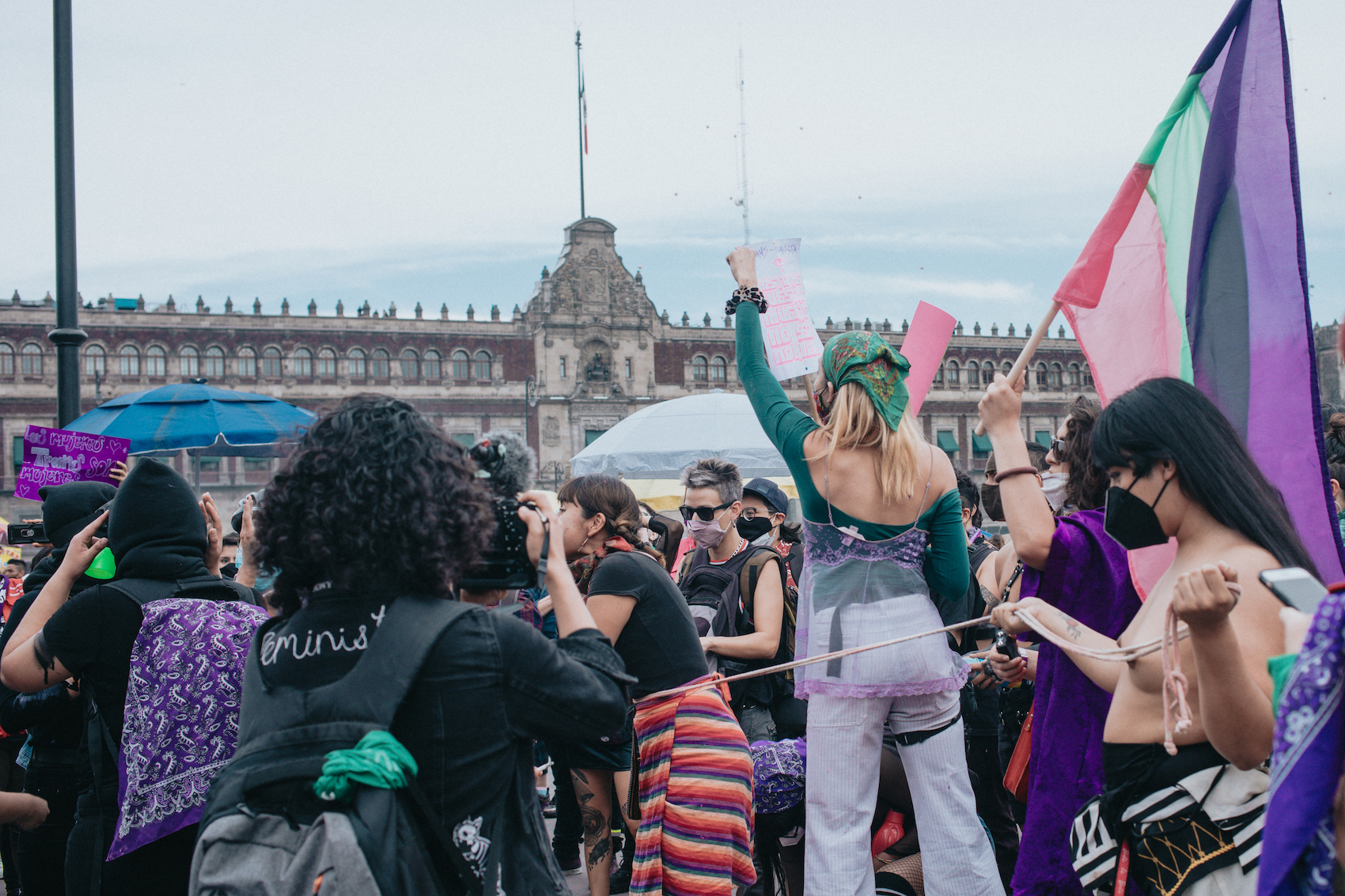
At the march, contingents indicated that they did not include trans women in their struggle by using code words in their invite like “separatist,” even though the march itself is largely women-only. Even in the face of this mushrooming hate, at least one trans-led contingent marched. As they rested upon arriving in the Zócalo, a handful of TERFs approached them, placing themselves dead in front of the trans contingent, staring them down.
“Fuera, TERFS. [Get out of here, TERFs,]” the crowd chanted as it became aware of the conflict, which nearly came to serious blows before it was diffused. Elsewhere, pro-trans graffiti was disfigured, painted over, even as the march took place.
I’ve been reading Mademoiselle, Rhonda K. Garelick’s biography of Coco Chanel, the Nazi fashion designer. The dull horror that history can sow within me grew to uncomfortable recognition when the book got to Chanel’s chic social circles, full of the Third Reich and its collaborators. I know Nazi comparisons are gauche and usually wrong, but in the run-up to Women’s Day, as acquaintances suddenly spouting anti-trans views, the resemblances were discomfiting. I’m not the only one who caught the vibe; CDMX multi-instrumentalist trans producer Manitas Nerviosas’ released the driving track “TERFS R’ NAZIS” during the run up to this year’s march.
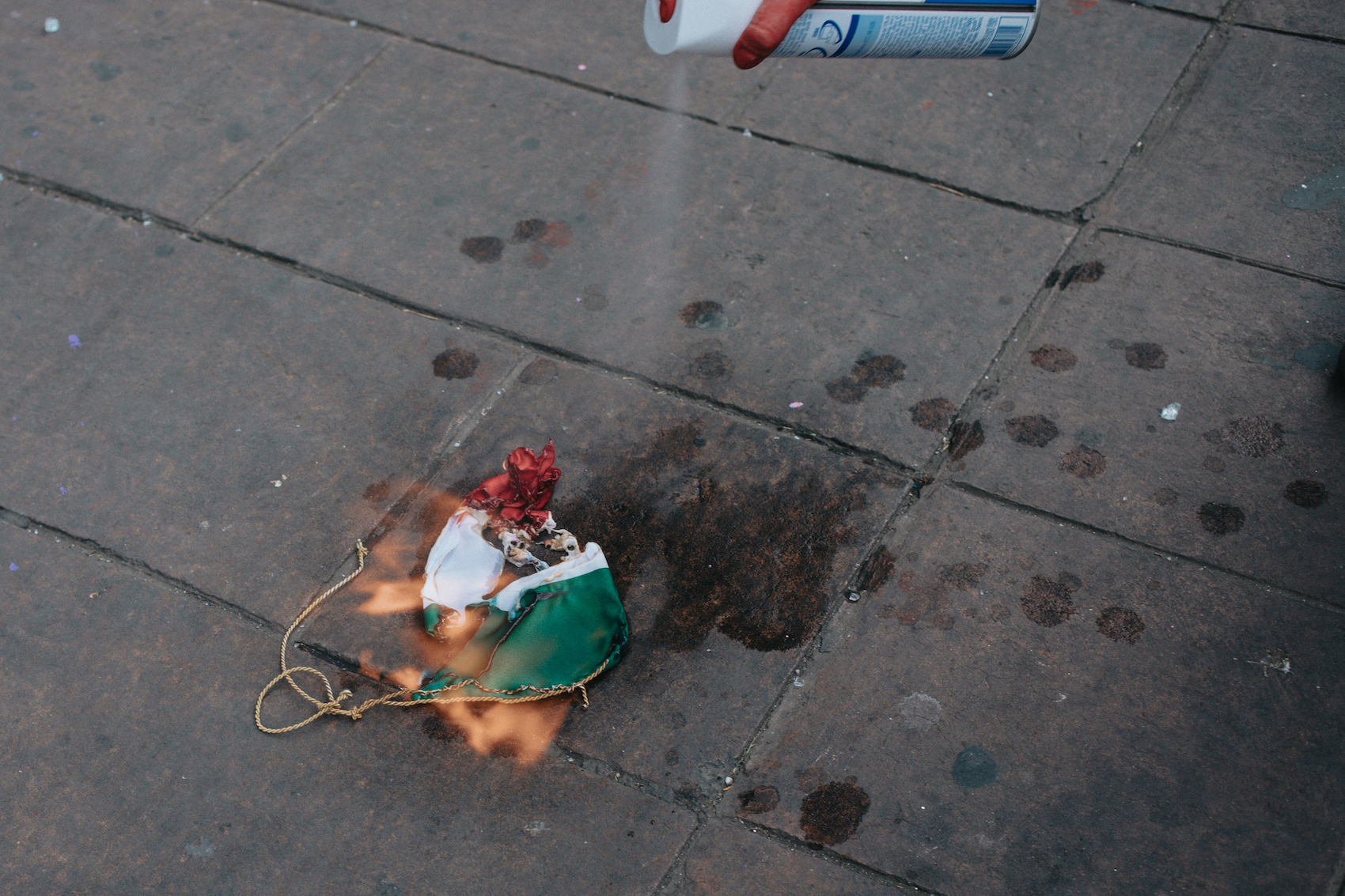
All of these sights and sounds and feelings and thoughts are part of the Women’s Day march. It is allowed to be many things, to inspire and support and baffle and shock and bash back, just like women do.
The march, as it always does, ended up in the city’s historic central plaza, the vast Zócalo, in front of the walls. Which, no one was surprised to see, protestors had partially knocked down. At one point, one woman broke out an flame thrower, whose plumes licked between the gaps in the walls they’d rammed through.
When the walls fell, a double row of law enforcement with body shields was revealed, armed with what the mayor would later insist was fire extinguisher powder and definitely not pepper or tear gas. 50 meters away from the armed forces at the wall, our eyes and sinus burned. I’m not an expert, but also I’m not the only one who doesn’t believe that was all fire extinguisher powder.
A punk queen in a crop top named Lila Cizas (immediately dubbed “La Reinota” on Twitter) chased down one not-tear-gas canister shot by government forces and hurled it back over the wall where it came from.
I imagined what would happen if the protestors somehow broke through the lines of police and their body shields and odd gases, took the National Palace for themselves. If they assumed control of the government, instituted community-based safety systems and drug decriminalization, effective jobs programs, subsidized childcare, safe and effective public transportation, an equitable water utility system.
That didn’t happen. Eventually, protestors left the Zócalo; to care for each other, to booze, to rest, to dream, to read suspect media reports, to write them, to rest up for the future protests that this year will surely bring.
I haven’t gotten to the end of my thoughts yet—I doubt many have. But this I know; that fucking wall had it coming.


